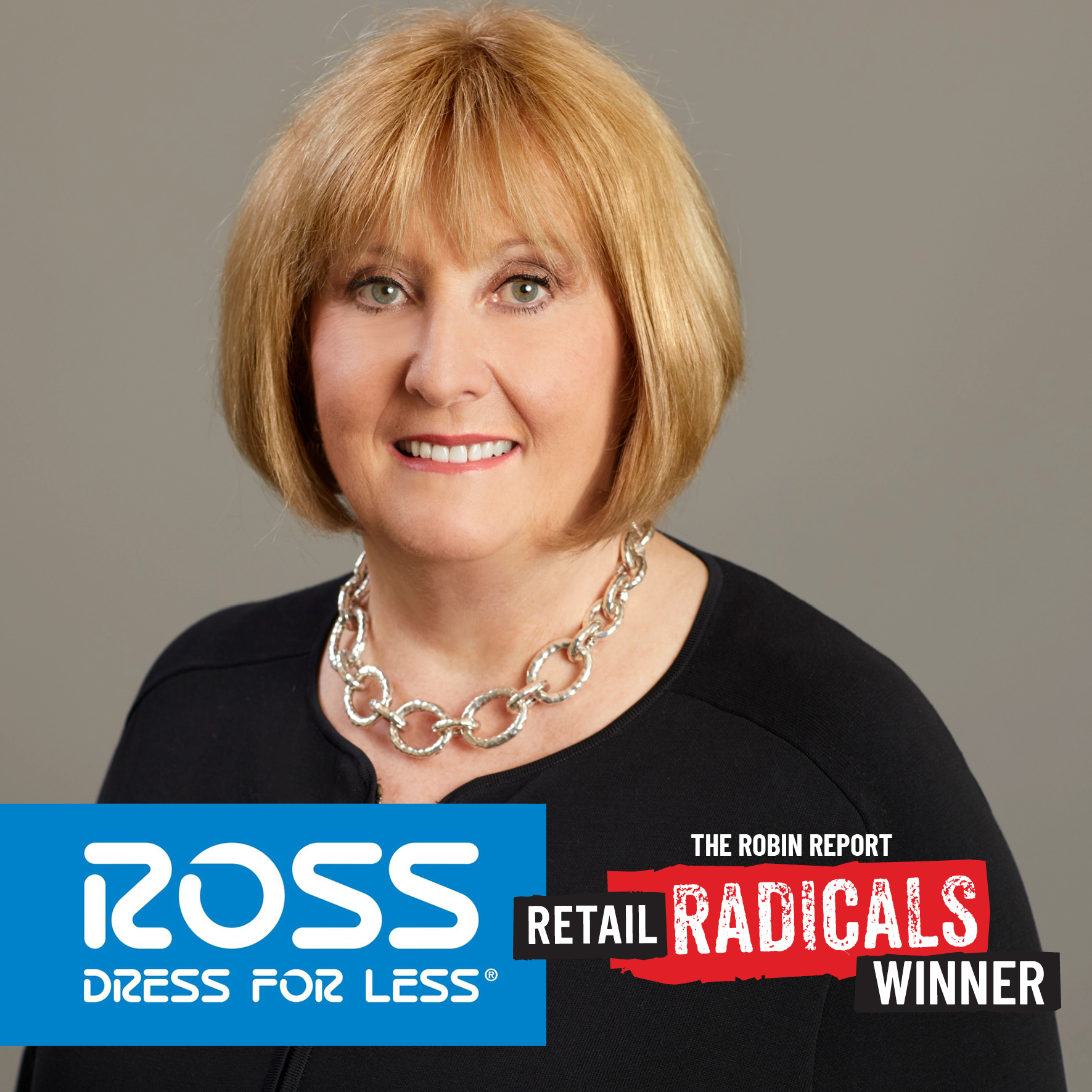Ross Stores is on a roll. When many retailers are contracting, Ross is on the move opening 40 new stores this fall to meet its goals of 100 new stores in 2022 – delivering on its 2021 growth plans. It is the largest off-price apparel and home fashion chain in the U.S. Off-price has a key position in the retail pantheon, and Ross is crushing it delivering the experiential gift of surprise in the treasure hunt that consumers love and value as a reward.
With its surging growth, CEO Barbara Rentler is leading a 40-year-old Retail Radical in a very traditional clothing retail sector that dropped 26 percent from 2019 to 2021. She was the only woman on Forbes’ list of America’s 100 most innovative leaders, and as a nonessential retailer with no ecommerce presence, the growth she has propelled is especially impressive. Plus, they are ambitious with plans to open 2,900 Ross Dress for Less and 700 dd’s DISCOUNTS locations over time. And going completely against trend, Ross does no business online, instead directs customers to their local stores to take advantage of its “no frills—no window displays, mannequins, fancy fixtures or decorations so it can pass more savings on to customers.” It’s perfectly positioned given the current high rate of inflation and the expected economic downturn to come next year.
Barbara Rentler: “Ross is committed to creating value for our Associates and our communities and doing so with a high level of ethics and integrity. In addition to fulfilling our mission of offering customers the best name-brand bargains possible, we aim to empower our Associates, operate in ways that reduce our environmental impact, and give back to the communities where we conduct business.”
Workplace Culture
For four decades, Ross Associates have played an essential role with customers. Operating in an inclusive culture, Ross’s 100,000 associates are empowered to contribute to the communities where they live and work through “CommUnity Networks” which connects the workforce with one another. Employees are also empowered with digital learning and engagement, virtual internships, and scholarship educational opportunities as an offshoot of the pandemic. A pioneer in sustainability initiatives, over the past 20 years Ross has been dedicated to use less energy and fewer natural resources. Ross is also committed to giving back to its local communities through partnerships with the Boys & Girls Clubs of America and has a goal to help children achieve academic success, build confidence, and lead healthy lives.
As Rentler states, “Ross is committed to creating value for our Associates and our communities and doing so with a high level of ethics and integrity. In addition to fulfilling our mission of offering customers the best name-brand bargains possible, we aim to empower our Associates, operate in ways that reduce our environmental impact, and give back to the communities where we conduct business.”
Everyone Loves a Bargain
Ross lives its motto, Dress for Less. It offers name-brand apparel, accessories, footwear, and home fashions at savings of 20 percent to 60 percent. And it pays off. Ross was the comeback story of the pandemic. After shuttering most stores in part of 2020 due to the pandemic, the company dropped 22 percent in sales and 94 percent in net profit. The comeback in 2021 was a testament to the company’s resiliency. In 2021, Ross increased sales by 51 percent compared to the industry of apparel and accessories which experienced a growth of 22.5 percent. The company was able to successfully navigate through challenging supply chain issues and higher expenses to deliver stellar financial performance for the year. Strong cash flow throughout the year provided the company the opportunity to reinvest in stores (renovations and new stores), IT infrastructure, and distribution initiatives. The return of assets of nearly 13 percent demonstrates the discipline of the store management team to use the assets of the business to fuel growth. Superior execution in merchandise procurement along with consistent expense discipline keeps Ross a dominant player in the off-price market. Ross Stores increased sales 18 percent over pre-pandemic levels and has a three-year sales CAGR of 8 percent. The management team has been effective at using the company’s assets to drive profit with a return on assets of 12.6 percent. Cash flow has increased from $3.7 billion in 2020 to $4.9 billion at the end of 2021. That alone makes Ross a Retail Radical in high performance.
Strategic Advantage
The key long-term advantage for Ross is a focused merchandise strategy which includes a combination of purchasing goods in advance of season, in-season, and past season. The
merchandise mix of product categories is focused and more limited than what’s offered at discount or department stores. Instead, it provides a deeper assortment in the categories it does carry. A focus on home and women’s apparel represents 51 percent of the business, while accessories and men’s represent 14 percent each.
Operational Advantages
Taking advantage of buying goods when products are available in the marketplace and selling them when the demand is high, is a sourcing strategy that allows the company to maximize its profits. Ross has over 900 merchants that source goods for Ross Dress for Less and dd’s DISCOUNTs stores.
With its rich network and relationships with vendors and suppliers, Ross secures quality, name-brand goods, and offers those products to consumers at a significant value price. The company uses an opportunistic purchasing cadence, which means it will buy excess merchandise from a manufacturer or buy directly from brands. Ross ships these goods directly to stores in-season or uses packaway to store goods for later in the season or the future. In 2021, packaway accounted for about 40 percent of total inventory and was a key driver of its revenue for the year. As supply chain challenges plagued many retailers, Ross was able to rely on its packaway strategy to keep goods flowing into the stores and was not as impacted by supply chain issues.




